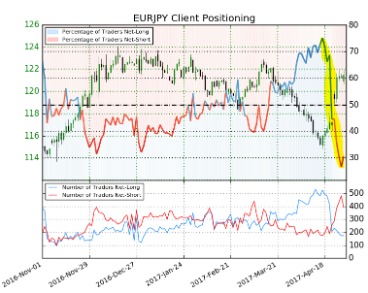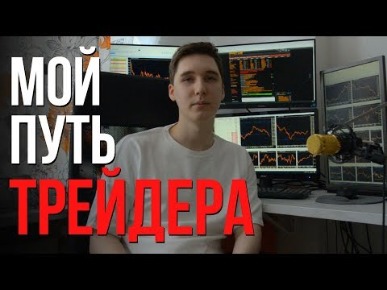
It’s not a common occurrence, nor is it a reliable signal that a price reversal will soon happen. The dragonfly doji pattern also can be a sign of indecision in the marketplace. For this reason, traders will often combine it with other technical indicators before making trade decisions. The doji is a commonly found pattern in a candlestick chart of financially traded assets in technical analysis. It is characterized by being small in length—meaning a small trading range—with an opening and closing price that are virtually equal. A doji is not as significant if the market is not clearly trending, as non-trending markets are inherently indicative of indecision.

In this section of the article, we wanted to share some good ways you can go about to filter out bad trades. These are methods that we use a lot in our own trading strategies, and that have proven themselves many times over. Most real traders would agree if we told them that you cannot use the long-legged doji as is. During the pattern, the market cannot decide whether to break up or down.
If that sentiment continues, then it might be a good time for a short trade. The doji is a single-session pattern, which means it is only comprised of one candlestick. However, they become much more useful when taken as part of a wider context.
Inverted hammer and shooting star
This signals that one side has won the battle and that prices are likely to continue in that direction. Historically, bullish breakouts have been more reliable than bearish ones, so many traders use a Doji breakout as a buy signal. The Dragonfly Doji is typically seen as a bullish reversal pattern since buyers were able to overcome selling pressure and push prices higher. The Doji candlestick pattern relates to the candlestick method of technical analysis. Either a bullish or a bearish engulfing candlestick can create a Doji. Furthermore, it is very unlikely to see the perfect Doji in the forex market.

For example, a gravestone doji can be followed by an uptrend or a bullish dragonfly may appear before a downtrend. Both patterns need volume and the following candle for confirmation. It is perhaps more useful to think of both patterns as visual representations of uncertainty rather than pure bearish or bullish signals. A Doji candle pattern can be used to identify potential support and resistance levels by looking for the high and low points of the pattern. This can be used to help traders identify when the market may be preparing to move in a particular direction. It means that there was no price movement all through the trading session — complete indecision.
Candlestick patterns are created by one or more individual sticks on a chart. While the standard Doji is the most common, there are also other types of Doji patterns that you should be aware of. If you see a Doji at the bottom of a downtrend, it could be a sign that the trend is about to turn around.
In the market but can also be an indication of slowing momentum of an existing trend. Rayner Teo is an independent trader, ex-prop trader, and founder of TradingwithRayner. Even though I just started to learn a few days ago, it is very helpful. If you see many Four-Price Dojis on the chart – stay out of this market.
A Doji candlestick can look like a cross or a plus sign, with a small or non-existent body. A Doji can represent indecision in the market, with both sellers and buyers in doubt. A breakout occurs when the price moves above or below the Doji’s high or low, respectively.
Therefore, knowing to read and implement the long legged Doji candlestick in your trading strategy should be the priority of every professional trader. If you are unsure what long legged Doji candlestick represents and the Doji candle pattern in general, we will explain it in the following lines. When the market opens for the new day, everything seems normal at first. Buying pressure is stronger than selling pressure, and makes the market head higher. However, with the market having gone up for quite some time, market participants are becoming worried that a pullback or trend reversal is imminent. As such, they start selling their positions, which increases selling pressure, leading to a decline in price.
Metatrader 4 Keyboard Shortcuts
Doji and spinning top candles are commonly seen as part of larger patterns, such as the star formations by technical analysts. In this example, the gravestone doji could predict a further breakdown from the current levels to close the gap near the 50- or 200-day moving averages at $4.16 and $4.08, respectively. A doji names a trading session in which a security has an open and close that are virtually equal, which resembles a candlestick on a chart. The vertical lines above and below the line are simply longer in the Long-Legged Doji.
A Doji is defined as a unique pattern in a candlestick chart that shows when the opening and closing prices of a financial asset being traded are equal or only have small differences. In Japanese, the meaning of Doji is “mistake”, which refers to the fact that having equal opening and closing prices is unlikely or only happens rarely. Trades based on Doji candlestick patterns need to be taken into context. For example, a Standard Doji within an uptrend may prove to form part of a continuation of the existing uptrend. However, the chart below depicts a reversal of an uptrend which shows the importance of confirmation post the occurrence of the Doji. In the world of candlestick charts, there are two very similar-looking formations known as the Doji and the Spinning Top.
- We’ll cover its meaning, definition, how to improve the pattern, and we’ll also show you a couple of example trading strategies.
- This doji is a bearish pattern that suggests a reversal followed by a downtrend in the price action.
- That is to say that the session’s open, high, and close prices are at the same level, while it traded lower at some point during the trading session.
- A hollow candlestick is formed when a stock closes higher than it opened.
The size of the doji’s tail or wick coupled with the size of the confirmation candle can sometimes mean the entry point for a trade is a long way from the stop-loss location. Doji are used in technical analysis to help identify securities price patterns. However, keep in mind that you must wait for confirmation before acting.
Other Doji Variations
Changelly offers the best exchange rates, low fees, and 24/7 client support. He is the most followed trader in Singapore with more than 100,000 traders reading his blog every month… If the price has tested the highs/lows (of the Long-Legged Doji) multiple times, then it’s likely to break out.
This https://topforexnews.org/ T appears in a group of candles on a chart and is a bearish pattern indicating that a reversal is on the horizon with a downtrend in the price action. Knowing the ins and outs of the gravestone doji, when to use it, and combining it with other technical tools can help you minimize your losses while you profit on your trades. While the Doji candlestick chart pattern alone is not enough to confirm a trend reversal, it can serve as part of a broader technical setup. For example, if the Doji forms after an extended downtrend, it could signal that bears are losing control and that a reversal to the upside is likely.
When the open and https://en.forexbrokerslist.site/ prices are roughly the same, but there are extreme highs and lows during the time, causing lengthy tails, the result is a long-legged Doji. A long-legged Doji pattern suggests ambivalence because, despite significant moves both up and down over the period, neither the bulls nor the bears make any substantial advancement. A Doji indicator is mostly used in patterns, and it is actually a neutral pattern itself.
The harami cross pattern is a two-candlestick pattern in which the range of the Doji candlestick lies within the body of the first candlestick, which can be of any color. The pattern signifies a tight consolidation that often heralds a big price movement. Sometimes called a “Rickshaw Man”, the long-legged Doji is like the standard Doji but has very long upper and lower shadows.
By itself, the Doji candlestick only shows that investors are in doubt. However, there are main patterns that can be easily found on the chart. After a downtrend, the Dragonfly Doji can signal to traders that the downtrend could be over and that short positions could potentially be covered.
https://forex-trend.net/s did not increase over the beginning price since there is no line above the horizontal bar, forming a ‘T’ shape. This Doji’s very long lower wick at the bottom of an adverse move is a very bullish signal. A Standard Doji is a single candlestick with little meaning by itself. Traders can figure out what this candlestick indicates by looking at the price activity leading up to it. Doji candlestick patterns must be viewed in context when trading.
However, traders must wait for the following candle to form to confirm the shift. It appears during a market uptrend, signaling the possibility of a bearish reversal. The opposite pattern of a gravestone doji is a bullish dragonfly doji. The dragonfly doji, which isn’t a very frequent pattern, looks like a “T” and it is formed when the high, open, and close of the session are all equal or nearly the same.